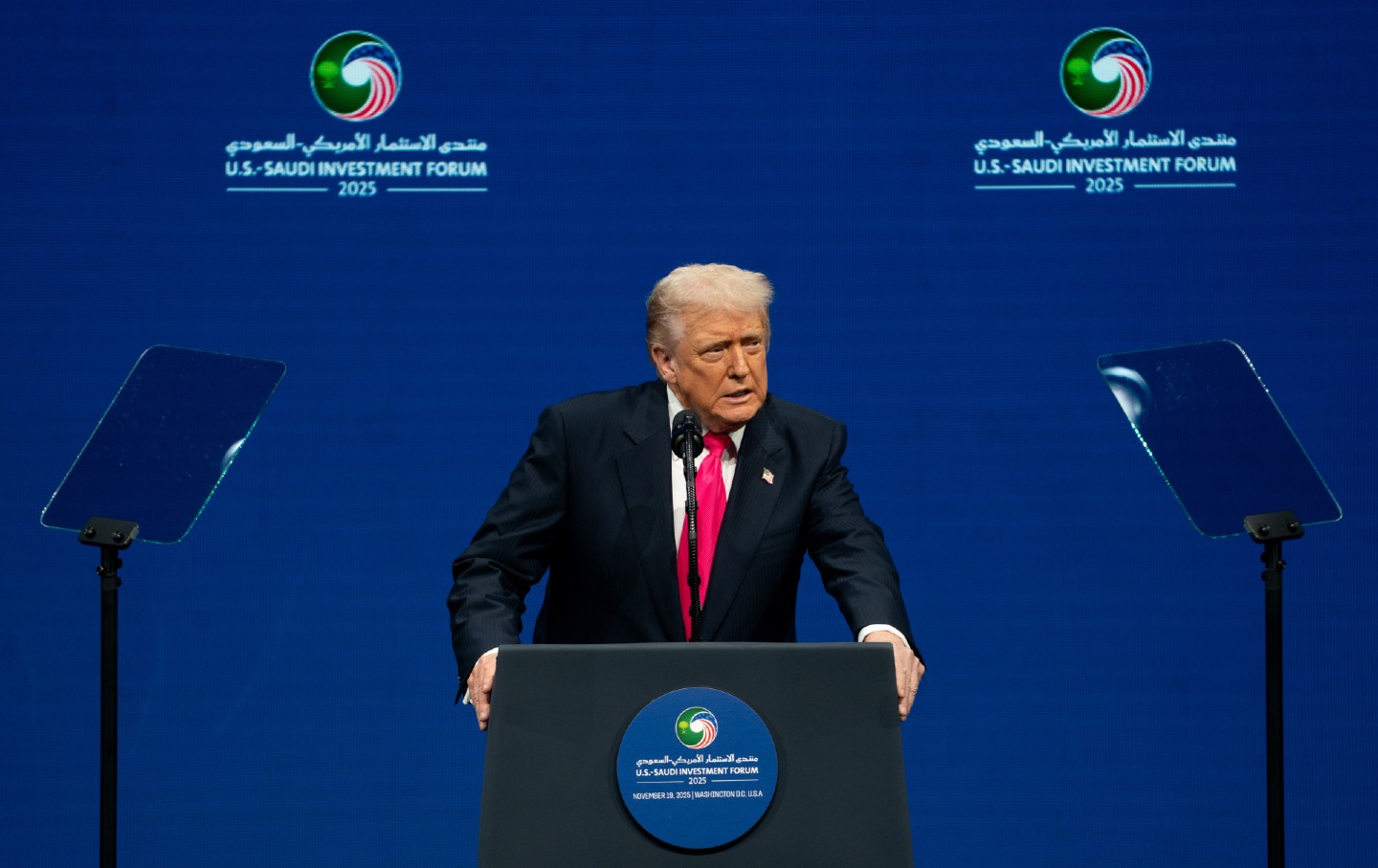The US-Mexico Tortilla War
A trade dispute between Mexico City and Washington puts a spotlight on food sovereignty, GMOs, glyphosate, and the fate of Mexico’s iconic white-corn flatbread.
Why the Health of Tens of Millions Depends on the US-Mexico Tortilla War
A trade dispute between Mexico City and Washington puts a spotlight on food sovereignty, GMOs, glyphosate, and the fate of Mexico’s iconic white-corn flatbread.

Do nations have the right to determine their own food policies? Can they make laws to safeguard domestic agriculture, public health, the environment, and the genetic integrity of the national diet?
If sovereignty means anything, the answer to these questions is yes. Defending food supplies is an ancient cornerstone of the social contract, one enshrined in 21st-century trade pacts, including the US-Mexico-Canada Agreement (USMCA), the successor to NAFTA. In December 2023, Mexican President Andrés Manuel López Obrador invoked this right when he banned genetically modified corn for human consumption and announced a plan to phase out the use of glyphosate, GM corn’s signature herbicide, which the World Health Organization calls “probably carcinogenic to humans.” The measure, said López Obrador, was necessary to guarantee Mexicans’ “rights to health and a healthy environment, native corn, [and] ensure a nutritious, sufficient, and quality diet.”
If GM corn and glyphosate pose health risks to humans, as suggested by a growing body of research, then those risks are magnified in Mexico, where the diet revolves around minimally processed white corn, especially in the form of its iconic flatbread, the tortilla. Cornmeal accounts for more than 60 percent of the average Mexican’s daily calories and protein, which is roughly 10 times the US average and puts Mexicans at 10 times the risk.
Mexico’s assertion of food sovereignty was not welcomed in Washington, where the Biden administration joined industry in crying foul. Under enormous pressure from its biggest trading partner to rescind the decree, the López Obrador government has stood firm; so, too, has the heavy favorite in Mexico’s June presidential election, Claudia Sheinbaum, who signed an accord in April with Mexico’s peasant organizations to uphold the ban on transgenic maize in food and replace glyphosate with safer alternatives. Unable to muscle Mexico City into reversing course, the US trade representative, Katherine Tai, last August lodged a formal complaint with the secretariat of the USMCA. It alleges that Mexico’s decree constitutes a trade violation that infringes on the superseding rights of US farmers and biotechnology companies. It describes Mexico’s concerns as “unscientific,” while making no mention of Mexico’s repeated calls to form a joint research commission to investigate the matter.
According to the charter of the USMCA, the case will be adjudicated by a council of three judges with experience in trade dispute resolution. The United States and Mexico each nominated one member, with Swiss trade expert Christian Häberli serving as chair. The troika is expected to issue its ruling by the end of this year.
But whatever its judgement, the US-Mexican dispute has put a needed spotlight on mounting global concern about the consolidation of a global food system dominated by a handful of biotech and chemical firms. Mexico’s challenge has also bolstered its standing as hemispheric leader of an agroecology movement gaining momentum across the global south.
“If the biotech companies defeat maize in its center of origin, it will embolden them to do the same in other centers of origin,” said Tania Monserrat Téllez, an organizer with Sin Maiz, No Hay Pais (Without Corn, There Is No Nation), a coalition of groups in Mexico supporting the ban. “We are challenging an entire model of production that threatens not just Mexico, but the world.”
In Mexico, corn is not just a commodity, or even just a favorite food or source of protein. It is central to national identity and deeply embedded in culture and rituals. The closest analogues—wheat in the countries of Europe, rice across Asia—pale beside the cultural and dietary importance of maize in the land where it was first domesticated. Its import extends backward to the earliest Mesoamerican creation myths starring maize-minded gods. The Aztec believed the first man resulted from Quetzalcóatl’s gifting of cultivated corn; in the Maya story, the first spiritually fit humans are crafted from maize seeds after failed attempts to use wood and mud. Across growing chasms of class, Indigenous proclamations that “corn is our blood” continue to unite Mexicans as “hombres del maiz.” To prove it, they eat the equivalent of seven to 10 tortillas a day, or 165 pounds’ worth every year.
Many argue that the threat of GM corn contaminating Mexico’s prized genetic store of native landraces alone would justify its ban under the terms of the USMCA, which recognizes nations’ authority over their cultural heritage. The growing scientific literature reporting adverse health effects from consuming GM corn—which is often covered in glyphosate residue—only compounded Mexico’s sense of urgency.
This urgency was given fuller expression in January, shortly after the decree was announced, in the form of a 200-page document that Mexico sent to the USMC secretariat. “Corn is a fundamental part of Mexico’s biocultural legacy and is in continuous evolution thanks to indigenous and peasant communities,” it explains, describing the threat “transgenic introgression” poses to native varieties in the food supply. It then turns to evidence of the “irrefutable impacts” GM corn and glyphosate have on human health. Much of this section is drawn from a public database of academic research that Mexico’s science agency has maintained since 2020.
Mexico’s sober response to Washington’s dismissal of its concerns as “unscientific” should interest residents of the United States and Canada (which is siding with the US in the dispute). In both countries, almost all white and yellow corn produced since the late 1990s has been engineered to produce the bacterial spores that give “Bt corn” its name: Bacillus thuringiensis. What stops significant traces of the insecticidal toxins from entering US and Canadian food supplies is the dominance of highly processed corn oils and cereals, the production of which breaks them down. But that protective barrier does not exist in the Mexican diet, and Washington knows it.
Made mostly by Bayer (formerly Monsanto) and the Chinese firm Syngenta, Bt is an anodyne acronym for a miniature chemical horror story replicated every day millions of times in fields across the United States and Canada. What happens is this: The genetic code of Bt seeds are programmed to produce toxins that attack the stomach linings of crop-munching caterpillars. These toxins, members of the Cry protein family, bore tiny holes in the insects’ stomach, through which moisture escapes, causing the pests to die of dehydration. At this, Bt is very effective.
What worries Mexico—and a lengthening list of health organizations and governments around the world—is accruing evidence that Bt toxins also attack the stomach and GI tracts of non-target insects, mammals, and possibly people. In Brazil and Colombia, researchers have documented Bt’s observable impacts on the multigenerational health of wasps. Researchers in China and Pakistan have found that wolf spiders exposed to Bt have lower diversity of healthy gut bacteria. We know little about their long-term impact on humans, because such impacts have not been formally studied. (We’ll return shortly to why that is.) But the little we do know is concerning. Among the 66 peer-reviewed articles cited by Mexico is a 2021 paper by Mexico’s Institute of Sciences that found Bt toxins trigger an immune response in humans “as potent as that elicited by cholera toxin.” Mexico acknowledges that the research on human health impacts is insufficient to draw firm conclusions. But the US government’s insistence that GM crops are safe because they have been planted and consumed by US farm animals 25 years does not hold up. Farm animals have short lives, have not been studied for effects, and the amounts of Bt corn in their feed can’t be compared to the levels Mexicans would consume if it became the dominant form of corn.
Popular
“swipe left below to view more authors”Swipe →Mexico’s concerns over the Cry toxins inside Bt corn extend to the chemical residues on the outside. Along with producing insecticide, Bt corn is engineered to tolerate year-round sprayings of glyphosate, the herbicide most people know as Roundup. The science around this aspect of Mexico’s decree puts it on firmer ground. Its scientific submission to the USMCA secretariat cites 74 human and animal studies describing the mechanisms by which the weed killer causes, for example, genetic damage to hematopoietic stem cells in human bone marrow, which can lead to blood cancers like Non-Hodgkin Lymphoma and leukemia. One long-term study at UC Berkeley linked glyphosate to liver damage in the children of Hispanic farmworkers as young as 4. Other peer-reviewed studies have linked glyphosate to neurodevelopmental problems, kidney disease, weakened bacterial microbiomes, and premature birth.
The science linking heavy use of glyphosate and non-Hodgkin lymphoma has been compelling enough to convince dozens of judges and juries in the United States and Canada to award billions of dollars to the 100,000 plaintiffs who have sued Bayer in recent years. In a decision that many executives and stockholders now regret, the company knowingly took on this legal legacy when it paid $63 billion in cash for Monsanto in 2018, a merger that the industry press has called the “worst deal ever.” Since assuming Monsanto’s assets and liabilities, the company’s stock has tanked by 60 percent, with no end to its legal troubles in sight. The costs of its ongoing payouts and lawyer fees is estimated at more than $17 billion, with more glyphosate class-action suits on the way representing at least 40,000 people.
But shareholders are not the only casualties of these suits. The science presented by plaintiff experts at trial has also torpedoed the credibility of the agency responsible for regulating glyphosate. In a 2020 case brought by four farmworker advocacy groups, the US Court of Appeals for the Ninth Circuit issued a rebuke of the shoddy science and shaky logic behind the EPA’s classification of glyphosate as “not likely to pose cancer risk.” The court order highlighted how the agency violated its cancer risk assessment guidelines by ignoring its staff experts, and practicing “arbitrary and inconsistent reasoning” in its discounting of evidence linking glyphosate to blood cancers in humans and tumors in lab animals.
In an e-mail, the agency dismissed the Ninth Circuit’s assessment of its failure to follow the science. “EPA’s conclusion that glyphosate is not likely to be carcinogenic to humans is consistent with the [guidelines] and based on an independent, comprehensive weight-of-evidence evaluation,” said a spokesperson, who also noted that the agency “intends to revisit its cancer evaluation to better explain the carcinogenic potential of glyphosate and better explain EPA’s cancer assessment.”
How this assessment was reached in the first place is not a minor detail in the US-Mexico trade dispute. The role of regulatory capture is central to the story. For decades, Washington has told Mexico and other countries that they should trust US agency assurances that GM crops and glyphosate are safe. For decades, Mexico accepted those assurances. But those days have ended. Mexico’s rebuttal declares the information presented by the US and its regulatory bodies “lacking scientific rigor, is outdated, or with conflicts of interest.”
With those words, Mexico sent the ball back to Washington’s court. Two months later, the US Office of the Trade Representative responded to Mexico with its own version of the facts.
The US response, published in April, faced a higher bar. While Mexico needs to justify its precaution, the US is expected to cite credible data showing that GM corn and glyphosate are safe when consumed regularly and in large amounts. This was going to be difficult, given the absence of any such data. These couldn’t be replaced by long-term studies on animal health, because they don’t exist either.
In lieu of this research, the US presented nearly 300 citations to studies that mostly addressed the non sequitur of whether giving GM corn to animals would impair feed efficiency and performance. They did not include recent studies documenting signs of damage to the GI tract of animals and their immune systems—or many recent studies at all. Virtually all the research cited in the US submission was anachronistic: Completed in the 1990s and 2000s, it described the impacts of older GM corn varieties that produced lower levels of Bt toxins than the Bt corn sold today. Peppering the bizarre US bibliography are fluff pieces such as “The Norman Borlaug I Knew,” an article praising the personal character of the godfather of the Green Revolution and a revered biotech icon within the US agricultural establishment.
The general mushiness of the US response, say observers, dramatically undercuts the US position. “The shallowness and bias of the US rebuttal is shameful,” said Charles Benbrook, a former director of agriculture at the National Academy of Sciences who has been involved with the scientific debates over the safety of GM crops since the early 1990s. “It combines cherry-picked references to papers by industry-funded scientists with error-ridden, juvenile dismissals of serious papers in prominent peer-reviewed journals. It reads as a political document, not a scientific one.”
Why the US government would embarrass itself with such a document is not a mystery in Mexico. “Washington’s response reflects the corporate capture of the US regulatory system,” said Fernando Bejarano, director of the Action Network on Pesticides and their Alternatives in Mexico. “It’s what’s happens when you have unregulated corporate power.”
The rules governing the development and sale of GM foods date to the early 1990s, when Monsanto was preparing to bring the first major GM crop to market, Roundup Ready soybeans. Under Monsanto lobbying, the Food and Drug Administration created a voluntary consultation process for GM crops. It required only that technology developers provide the FDA with minimal data showing that the nutritional composition of the GM crops is “substantially equivalent” to the non-engineered version, and hence safe. Without requiring research that could flag potential harm, the FDA simply believes industry claims. The companies could take the new seeds to market as long as they promised to share any new information that may arise suggesting a possible public health threat. It is unlikely to shock anyone that no company has ever delivered such a notification of changing scientific opinion to the FDA.
More than a quarter-century later, there are still no rigorous animal studies and human trials required for agricultural biotech, as there are for new pharmaceuticals. The US National Academy of Sciences has issued repeated calls for surveillance of health issues possibly triggered by GM foods, but they have gone unheeded. In the FDA’s own words, the purpose of the system is to “ease pathway to marketplace.”
“The regulatory system is a rubber-stamp sham—and the US is a Wild West for biotechnology, where nobody is vouching for the safety of GM products or glyphosate,” said Bill Freese, science director at the Center for Food Safety, which submitted a brief on behalf of Mexico. “It’s designed to promote GMOs domestically and internationally, not to protect food safety or regulate a radical new technology.”
A window onto industry’s continued management of this system was opened during a 2017 Roundup lawsuit brought against Monsanto by four farmworker advocacy groups. As part of the discovery process, Friends of the Earth acquired transcripts of senior EPA officials colluding with Monsanto executives to discredit glyphosate’s classification as “probably carcinogenic” by the WHO’s International Agency for Research on Cancer and to neutralize an independent study being planned by the National Institutes of Health. In one conversation from 2015, EPA deputy director Jess Rowland brags to a company executive, “If I can kill this [NIH glyphosate study], I should get a medal.”
Industry influence in Congress has put sustained pressure on the FDA, the EPA, and the Department of Agriculture to keep the regulatory door open and publicly vouching for the safety and environmental benefits of new GM crops, despite mounting evidence of their dangers. Heavy lobbying, campaign contributions, and revolving doors have cemented institutional cultures where US-made agricultural biotechnologies are understood as benevolent extensions of US foreign and trade policy, as well as essential to the project of “feeding the world.”
In the most current version of the US-industry narrative, GM crops—together with chemical herbicides and fertilizers—are indispensable “climate smart” tools in the 21st-century fight against global hunger and food insecurity. It’s a powerful pitch. But beneath the buzzwords is an industry messaging strategy from the 1970s, crafted to play on anxieties over inflation and food shortages. With the updated version being blasted at high volume across Latin America and the wider Global South, it’s worth revisiting its origins. How and why, exactly, did GM crops and their consort glyphosate come to be?
In the 1970s, Monsanto was a company in crisis. Its profitable five-year run producing Agent Orange for the US military was over. Its business selling cancer-causing PCBs was running aground as science caught up to its devastating impacts. A bid to produce bottles for Coca-Cola fizzled when the FDA realized that its proposed plastic, Lopac, caused tumors in mice. But the biggest blow of all was delivered by a crusading new federal agency called the EPA. After its scientists fingered phosphate detergents as the culprit behind algae blooms that were ruining water systems across the country, Monsanto lost its booming business producing phosphates for the country’s most popular detergent, All.
More on Farming
The ban on phosphate detergents left Monsanto with a suddenly half-capacity phosphate rock mining plant in Soda Springs, Idaho. Rather than scale back production, Monsanto ordered its scientists to invent another salable phosphorous compound—the sooner the better. In his definitive history of Monsanto, Seed Money, Bartow J. Elmore describes how a company scientist named John Franz developed a broad-spectrum phosphate-based chemical that killed all weeds, as well as most nearby plants, shrubs, and trees. An executive named Randy Vranes hailed the herbicide as the firm’s “strategic exit” from the detergent business. Monsanto named its new herbicide glyphosate and trademarked the first formulated product as Roundup.
The EPA approved the new chemical largely on the basis of two dozen invalid and possibly fraudulent studies done by Industrial Bio-Test Inc., an infamous contract laboratory that in 1983 was found guilty of falsifying data on up to 200 of chemicals dating to the early 1970s—an institutional fraud that is considered one of the greatest scientific scandals in history.
Roundup uses and sales grew steadily; by the 1990s, it was Monsanto’s second-best-selling herbicide. But Monsanto wanted more. In a research project known internally as the “Manhattan Project,” company scientists were tasked with inventing a second golden egg: a line of genetic code that would make crops resistant to year-round, over-the-top sprayings of Roundup. If they could survive heavy dousing, writes Barstow, farmers “could spray Roundup—which was still under patent—over millions of acres of row crops throughout the growing season, killing weeds throughout the spring and summer without hurting their harvest. This was a market opportunity of astounding proportions.”
The project finally bore fruit—or rather, a legume—in 1989. That year, Monsanto scientists isolated a gene that could that could render plants resistant to the effects of glyphosate. In 1994, the company conducted field tests of Roundup Ready soybean. Full commercial launch occurred in 1996, followed by corn a few years later.
In the 30 years since the introduction of GM crops, this two-product dance has continued unabated. In the US, Canada, and parts of Latin America, the number of toxins per hectare of GM plants has roughly doubled every decade.
“This rising reliance on pesticides and toxins has diversified the routes and levels of human exposure,” reads the Friends of the Earth brief submitted to the USMCA, “[leading] to new and more serious adverse impacts [even as] the scope and adequacy of scientific research and regulatory oversight has receded in the wake of persistent political pressure for ‘regulatory relief.’”
At its core, US opposition to the Mexican decree has nothing to do with trade—US farmers produce less than one percent of corn for human consumption in Mexico—and everything to do with protecting the Bt crop-glyphosate “technology package” from scrutiny. But it may be too late for that. The Mexican decree is not the only regional brushfire the US government and biotech industry are eager to extinguish. Last month, a court in the Philippines revoked a safety permit for the production of genetically modified “golden rice” and Bt eggplant, citing “potential severe and grave threats to the welfare of people and the environment.” It is significant that Mexico and the Philippines are two of the poster children for last century’s Green Revolution. Though supposedly the beneficiaries of that grand US-directed experiment in industrial agriculture, they lack enthusiasm for its sequel.
For the next several months, the US-Mexico USMCA dispute will retain its top billing among the fights determining the future of the global food system. On April 1, López Obrador reconfirmed Mexico’s commitment to the GM corn ban and announced plans to expedite the introduction of six biopesticides being readied by the national science agency to replace glyphosate at scale. Against a backdrop of widespread public support for these measures, even a strong ruling against Mexico is unlikely to result in a reversal of the decree.
“If Mexico loses, it could accept the penalty but keep the policy,” said Timothy A. Wise, author of Eating Tomorrow and senior adviser at the Institute of Agriculture and Trade Policy. “AMLO has also indicated that he would seek hearings in other international venues. What I think is safe to say is that Mexico has no intention of allowing GM corn into its tortillas.”
At the time of publication, the US Department of Agriculture and the Office of the Trade Representative had not responded to questions related to the US complaint to the USMCA or allegations that the US government has failed to properly study and monitor the human health impacts of Bt corn and glyphosate-based herbicides.
Disobey authoritarians, support The Nation
Over the past year you’ve read Nation writers like Elie Mystal, Kaveh Akbar, John Nichols, Joan Walsh, Bryce Covert, Dave Zirin, Jeet Heer, Michael T. Klare, Katha Pollitt, Amy Littlefield, Gregg Gonsalves, and Sasha Abramsky take on the Trump family’s corruption, set the record straight about Robert F. Kennedy Jr.’s catastrophic Make America Healthy Again movement, survey the fallout and human cost of the DOGE wrecking ball, anticipate the Supreme Court’s dangerous antidemocratic rulings, and amplify successful tactics of resistance on the streets and in Congress.
We publish these stories because when members of our communities are being abducted, household debt is climbing, and AI data centers are causing water and electricity shortages, we have a duty as journalists to do all we can to inform the public.
In 2026, our aim is to do more than ever before—but we need your support to make that happen.
Through December 31, a generous donor will match all donations up to $75,000. That means that your contribution will be doubled, dollar for dollar. If we hit the full match, we’ll be starting 2026 with $150,000 to invest in the stories that impact real people’s lives—the kinds of stories that billionaire-owned, corporate-backed outlets aren’t covering.
With your support, our team will publish major stories that the president and his allies won’t want you to read. We’ll cover the emerging military-tech industrial complex and matters of war, peace, and surveillance, as well as the affordability crisis, hunger, housing, healthcare, the environment, attacks on reproductive rights, and much more. At the same time, we’ll imagine alternatives to Trumpian rule and uplift efforts to create a better world, here and now.
While your gift has twice the impact, I’m asking you to support The Nation with a donation today. You’ll empower the journalists, editors, and fact-checkers best equipped to hold this authoritarian administration to account.
I hope you won’t miss this moment—donate to The Nation today.
Onward,
Katrina vanden Heuvel
Editor and publisher, The Nation
More from The Nation

Mahmood Mamdani’s Uganda Mahmood Mamdani’s Uganda
In his new book Slow Poison, the accomplished anthropologist revisits the Idi Amin and Yoweri Museveni years.

The US Is Looking More Like Putin’s Russia Every Day The US Is Looking More Like Putin’s Russia Every Day
We may already be on a superhighway to the sort of class- and race-stratified autocracy that it took Russia so many years to become after the Soviet Union collapsed.

Israel Wants to Destroy My Family's Way of Life. We'll Never Give In. Israel Wants to Destroy My Family's Way of Life. We'll Never Give In.
My family's olive trees have stood in Gaza for decades. Despite genocide, drought, pollution, toxic mines, uprooting, bulldozing, and burning, they're still here—and so are we.

Trump’s National Security Strategy and the Big Con Trump’s National Security Strategy and the Big Con
Sense, nonsense, and lunacy.

Does Russian Feminism Have a Future? Does Russian Feminism Have a Future?
A Russian feminist reflects on Julia Ioffe’s history of modern Russia.

Ukraine’s War on Its Unions Ukraine’s War on Its Unions
Since the start of the war, the Ukrainian government has been cracking down harder on unions and workers’ rights. But slowly, the public mood is shifting.


